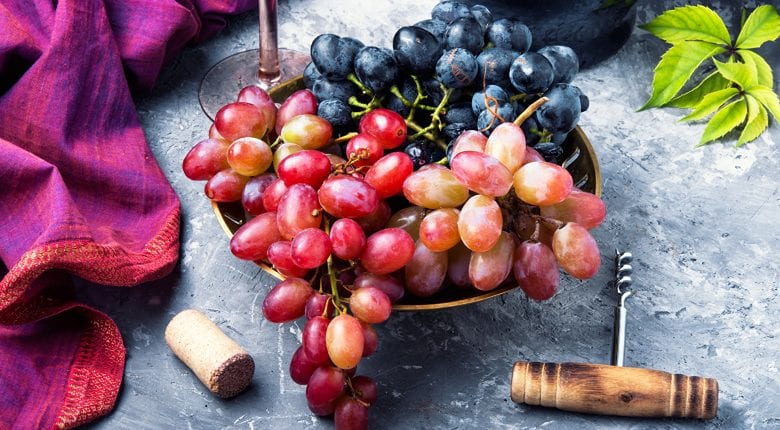It sounds like a silly question with an obvious answer: surely you make white wine from white grapes and red wine from red ones? The answer, however, is not that simple.
Red wine from blue grapes?
For a start, red wine isn’t actually made from red grapes at all, but from blue ones! That’s right… almost all the grape varieties used to make red wine are more or less dark blue in colour. While there are also grape varieties with red skins, such as Pinot Grigio or Gewürztraminer, these are generally used to produce white wine.
In addition, there is a major difference between red and white wines when it comes to the winemaking or vinification process.

The red and white winemaking process
In the case of white wine, the vinification process is relatively simple: the grapes are pressed and the juice – also known as the must – is fermented to make wine. It might surprise you to know that, if you repeat the exact same process with blue grapes, you don’t get red wine because the juice from most dark grape varieties is also clear… the colourants are mostly found in the skins! Therefore, when making red wine, the grapes must be first crushed or roughly milled to produce a mash of grape juice, fruit pulp and skin. This mash is then fermented, and the colourants are released from the grape skins and transferred into the liquid. Pressing occurs after fermentation. In summary, must fermentation is used to make white wines and mash fermentation to make red ones.
You might be thinking: couldn’t you also produce white wine from dark grapes by using the must fermentation process? And the answer is: yes, absolutely. This is precisely what is often done. A prime example would be champagne, which can be produced using any of three approved grape varieties. Of the approved varieties only one actually has white grapes: the Chardonnay; the other two, Pinot Noir and Pinot Meunier, are both blue varieties. Following harvest, the clear juice is pressed out of the Pinot Noir and Pinot Meunier varieties and instantly fermented to produce white wine. In France, this procedure is known as ‘Blanc de Noirs’, literally meaning ‘white from dark (grapes)’.
Rose wine is not a red and white wine blend
So, what about rosé? Contrary to popular belief, it is not a combination of white and red wine. Instead, rosé wine is produced from dark grapes via a shortened mash fermentation process. Once the desired depth of colour has been reached, the colourant-filled skins are removed, and the lightly coloured juice is left to ferment for longer. Despite this, however, there are some pinkish wines that are produced by combining white and red wine, but these cannot be referred to as rosé.
We hope you enjoyed this article. Please feel free to share it across social media… We’re on Facebook, Instagram, Twitter and Pinterest.